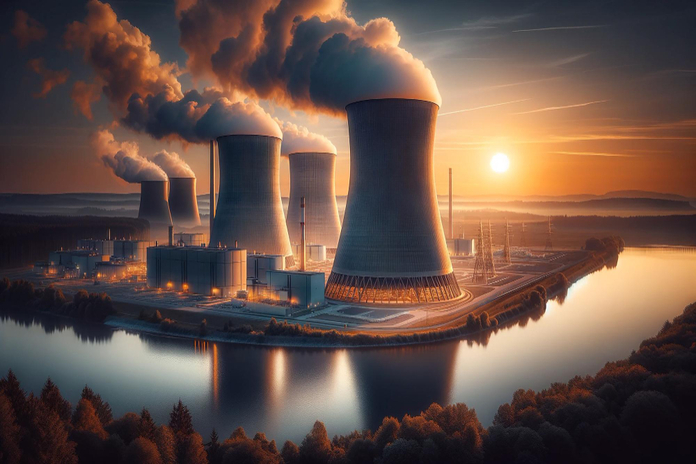As artificial intelligence continues to permeate every aspect of modern life, the energy required to support this technological revolution is surging. Major tech companies, including Amazon (NASDAQ:AMZN), Google (NASDAQ:GOOG), and Microsoft (NASDAQ:MSFT), are grappling with the challenge of meeting the AI energy demand. To address this, some companies are turning to unconventional solutions, including nuclear power, to ensure they can sustain their AI-driven growth. This article explores how the insatiable AI energy demand is reshaping Big Tech’s approach to energy consumption and sustainability.
The Growing AI Energy Demand
AI technologies, particularly those involved in machine learning and data processing, are incredibly energy-intensive. The training of AI models like GPT-3, which required approximately 1,300 megawatt-hours of electricity, represents just the tip of the iceberg. The real energy consumption occurs during the inference phase, where AI models generate responses to queries. This process, which involves millions of interactions daily, places significant strain on data centers, which are the backbone of AI operations.
Amazon’s acquisition of a $650 million nuclear-powered data center campus from Talen Energy in Pennsylvania is a direct response to this growing demand. By co-locating its AI data centers next to a nuclear power plant, Amazon Web Services is ensuring a reliable and powerful energy source to fuel its AI operations. This move underscores the broader trend among tech giants to seek out sustainable yet high-capacity energy sources to keep pace with AI’s energy requirements.
The Impact on Big Tech’s Sustainability Goals
The surge in AI energy demand presents a significant challenge to Big Tech’s sustainability pledges. Companies like Microsoft and Google have been vocal about their commitments to reducing carbon emissions and achieving net-zero goals. However, the energy demands of AI have complicated these efforts. Microsoft, for instance, has seen its carbon emissions rise by 29% since 2020, largely due to the expansion of AI-related data centers.
Despite these setbacks, renewable energy remains central to Big Tech’s strategy. In May 2024, Microsoft signed a historic corporate power purchasing agreement with Brookfield, securing over 10.5 gigawatts of new renewable energy capacity globally. Amazon, meanwhile, continues to lead as the largest corporate purchaser of renewable energy, with a portfolio capable of powering 7.2 million U.S. homes annually.
However, the intermittent nature of renewable energy sources, such as solar and wind, has prompted companies to explore more consistent and powerful alternatives like nuclear energy. The reliability of nuclear power makes it an attractive option for tech companies facing the dual pressures of AI energy demand and sustainability goals.
Innovations in Energy Efficiency
Beyond sourcing new forms of energy, Big Tech is also investing heavily in improving energy efficiency. One significant development is the creation of AI-specific chips designed to handle the massive workloads of AI tasks more efficiently. Google’s Tensor Processing Unit and Nvidia’s (NASDAQ:NVDA) latest Blackwell GPUs are examples of hardware innovations that reduce the energy consumption of AI models.
Nvidia claims that its new GPUs can cut AI model energy use and costs by up to 25 times compared to previous generations. These advancements are crucial as tech companies look for ways to manage the escalating costs associated with AI energy demand, particularly as global data center power demand is projected to grow by 160% by 2030.
Conclusion
The rise of AI energy demand is pushing Big Tech companies toward innovative and, at times, unconventional energy solutions, including nuclear power. As companies like Amazon, Google, and Microsoft continue to expand their AI capabilities, the challenge of sustaining this growth without compromising on sustainability becomes increasingly complex. By integrating nuclear power into their energy strategies and investing in energy-efficient technologies, these tech giants are paving the way for a future where AI can thrive without overwhelming the world’s energy infrastructure.
The path forward will require a delicate balance between meeting the insatiable energy needs of AI and upholding the environmental responsibilities that these companies have committed to. As AI continues to shape the future, the solutions to its energy demands will play a crucial role in determining the sustainability of the tech industry’s growth.
Featured Image: Freepik















